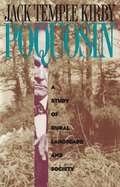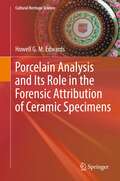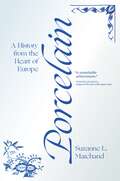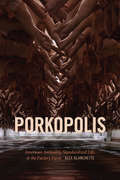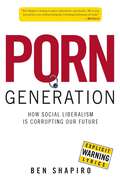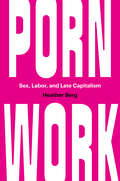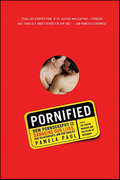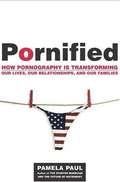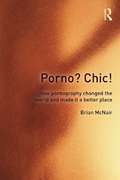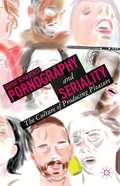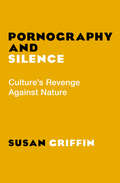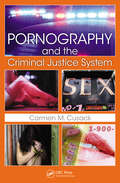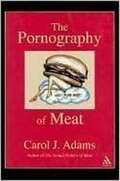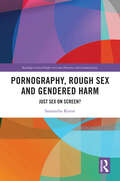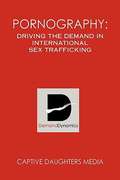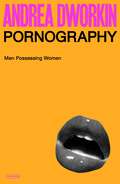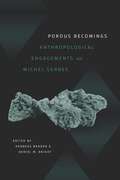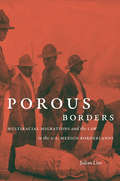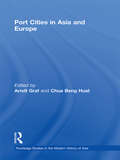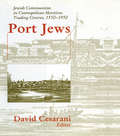- Table View
- List View
Poquosin
by Jack Temple KirbyJack Temple Kirby charts the history of the low country between the James River in Virginia and Albemarle Sound in North Carolina. The Algonquian word for this country, which means 'swamp-on-a-hill,' was transliterated as 'poquosin' by seventeenth-century English settlers. Interweaving social, political, economic, and military history with the story of the landscape, Kirby shows how Native American, African, and European peoples have adapted to and modified this Tidewater area in the nearly four hundred years since the arrival of Europeans. Kirby argues that European settlement created a lasting division of the region into two distinct zones often in conflict with each other: the cosmopolitan coastal area, open to markets, wealth, and power because of its proximity to navigable rivers and sounds, and a more isolated hinterland, whose people and their way of life were gradually--and grudgingly--subjugated by railroads, canals, and war. Kirby's wide-ranging analysis of the evolving interaction between humans and the landscape offers a unique perspective on familiar historical subjects, including slavery, Nat Turner's rebellion, the Civil War, agricultural modernization, and urbanization.
Porcelain Analysis and Its Role in the Forensic Attribution of Ceramic Specimens (Cultural Heritage Science)
by Howell G. EdwardsThe material for this book arose from the author’s research into porcelains over many years, as a collector in appreciation of their artistic beauty , as an analytical chemist in the scientific interrogation of their body paste, enamel pigments and glaze compositions, and as a ceramic historian in the assessment of their manufactory foundations and their correlation with available documentation relating to their recipes and formulations. A discussion of the role of analysis in the framework of a holistic assessment of artworks and specifically the composition of porcelain, namely hard paste, soft paste, phosphatic, bone china and magnesian, is followed by its growth from its beginnings in China to its importation into Europe in the 16th Century. A survey of European porcelain manufactories in the 17th and 18th Centuries is followed by a description of the raw materials, minerals and recipes for porcelain manufacture and details of the chemistry of the high temperature firing processes involved therein. The historical backgrounds to several important European factories are considered, highlighting the imperfections in the written record that have been perpetuated through the ages. The analytical chemical information derived from the interrogation of specimens, from fragments, shards or perfect finished items, is reviewed and operational protocols established for the identification of a factory output from the data presented. Several case studies are examined in detail across several porcelain manufactories to indicate the role adopted by modern analytical science, with information provided at the quantitative elemental oxide and qualitative molecular spectroscopic levels, where applicable. The attribution of a specimen to a particular factory is either supported thereby or in some cases a potential reassessment of an earlier attribution is indicated. Overall, the information provided by analytical chemical data is seen to be extremely useful for porcelain identification and for its potential attribution in the context of a holistic forensic evaluation of hitherto unknown porcelain exemplars of questionable factory origins.
Porcelain to Silica Bricks: The Extreme Ceramics of William Weston Young (1776-1847)
by Howell G.M. EdwardsThe title of this book describes the two extremes of ceramic invention from aesthetically beautiful and decorative works of art that graced the tables of the aristocracy to the functional silica brick that lined the smelting furnaces of industrialised nations in the 19th century designed to produce iron, copper and glass. Both of these ceramics are linked to one man, William Weston Young (1776-1847) and with his contemporaries both of these ceramic extremes became world leaders in their own right. The book traces the history of Young and his ambitions, his interactions with numerous associates and the influence these ceramics attained in 19th century society. The book provides a sequel to the two preceding texts on Nantgarw and Swansea porcelains (also published by Springer), which cover one extreme and extends the discourse onto the other extreme, which until now has been relatively ignored despite its scientific and engineering importance. The trilogy has now therefore been completed. This book examines the historical documentation along with scientific analytical data from the last 100 years up to the present in a novel holistic forensic approach.It will be of interest to porcelain collectors, ceramics analysts, museum ceramic curators, ceramic historians, analytical scientists, cultural heritage preservation, industrial archaeologists and industrial museums.
Porcelain: A History from the Heart of Europe
by Suzanne L. Marchand"This is the book on porcelain we have been waiting for. . . . A remarkable achievement."—Edmund de Waal, author of The Hare with Amber EyesA sweeping cultural and economic history of porcelain, from the eighteenth century to the presentPorcelain was invented in medieval China—but its secret recipe was first reproduced in Europe by an alchemist in the employ of the Saxon king Augustus the Strong. Saxony’s revered Meissen factory could not keep porcelain’s ingredients secret for long, however, and scores of Holy Roman princes quickly founded their own mercantile manufactories, soon to be rivaled by private entrepreneurs, eager to make not art but profits. As porcelain’s uses multiplied and its price plummeted, it lost much of its identity as aristocratic ornament, instead taking on a vast number of banal, yet even more culturally significant, roles. By the nineteenth and twentieth centuries, it became essential to bourgeois dining, and also acquired new functions in insulator tubes, shell casings, and teeth.Weaving together the experiences of entrepreneurs and artisans, state bureaucrats and female consumers, chemists and peddlers, Porcelain traces the remarkable story of “white gold” from its origins as a princely luxury item to its fate in Germany’s cataclysmic twentieth century. For three hundred years, porcelain firms have come and gone, but the industry itself, at least until very recently, has endured. After Augustus, porcelain became a quintessentially German commodity, integral to provincial pride, artisanal industrial production, and a familial sense of home.Telling the story of porcelain’s transformation from coveted luxury to household necessity and flea market staple, Porcelain offers a fascinating alternative history of art, business, taste, and consumption in Central Europe.
Porkopolis: American Animality, Standardized Life, and the Factory Farm
by Alex BlanchetteIn the 1990s a small midwestern American town approved the construction of a massive pork complex, where almost 7 million hogs are birthed, raised, and killed every year. In Porkopolis Alex Blanchette explores how this rural community has been reorganized around the life and death cycles of corporate pigs. Drawing on over two years of ethnographic fieldwork, Blanchette immerses readers into the workplaces that underlie modern meat, from slaughterhouses and corporate offices to artificial insemination barns and bone-rendering facilities. He outlines the deep human-hog relationships and intimacies that emerge through intensified industrialization, showing how even the most mundane human action, such as a wayward touch, could have serious physical consequences for animals. Corporations' pursuit of a perfectly uniform, standardized pig—one that can yield materials for over 1000 products—creates social and environmental instabilities that transform human lives and livelihoods. Throughout Porkopolis, which includes dozens of images by award-winning photographer Sean Sprague, Blanchette uses factory farming to rethink the fraught state of industrial capitalism in the United States today.
Porn Generation: How Social Liberalism Is Corrupting Our Future
by Ben ShapiroPorn Generation: How Social Liberalism Is Corrupting Our Future by Ben Shapiro
Porn Work: Sex, Labor, and Late Capitalism
by Heather BergEvery porn scene is a record of people at work. But on-camera labor is only the beginning of the story. Porn Work takes readers behind the scenes to explore what porn performers think of their work and how they intervene to hack it. Blending extensive fieldwork with feminist and antiwork theorizing, Porn Work details entrepreneurial labor on the boundaries between pleasure and tedium. Rejecting any notion that sex work is an aberration from straight work, it reveals porn workers' creative strategies as prophetic of a working landscape in crisis. In the end, it looks to what porn has to tell us about what's wrong with work, and what it might look like to build something better.
Pornified: How Pornography Is Damaging Our Lives, Our Relationships, and Our Families
by Pamela Paul"Strips porn of its culture-war claptrap . . . Pornified may stand as a Kinsey Report for our time."—San Francisco ChroniclePorn in America is everywhere—not just in cybersex and Playboy but in popular video games, advice columns, and reality television shows, and on the bestseller lists. Even more striking, as porn has become affordable, accessible, and anonymous, it has become increasingly acceptable—and a big part of the personal lives of many men and women. In this controversial and critically acclaimed book, Pamela Paul argues that as porn becomes more pervasive, it is destroying our marriages and families as well as distorting our children's ideas of sex and sexuality. Based on more than one hundred interviews and a nationally representative poll, Pornified exposes how porn has infiltrated our lives, from the wife agonizing over the late-night hours her husband spends on porn Web sites to the parents stunned to learn their twelve-year-old son has seen a hardcore porn film. Pornified is an insightful, shocking, and important investigation into the costs and consequences of pornography for our families and our culture.
Pornified: How Pornography is Transforming Our Lives, Our Relationships, and Our Families
by Pamela PaulWhile most books about pornography examine it from a religious or spiritual nature, this book avoids that entirely. Instead, it examines the ways in which pornography negatively impacts the lives of users and those they love. The author asserts that the annonymity and ease of access to Internet pornography has changed lives and forced even the very young to deal with sexuality differently than at any other time in our history. She relies heavily on the results of a national poll which deals with the effects of pornography on the lives of those who use it.
Porno? Chic!: how pornography changed the world and made it a better place
by Brian McNairPorno? Chic! examines the relationship between the proliferation of pornography and sexualised culture in the West and social and cultural trends which have advanced the rights of women and homosexuals. Brian McNair addresses this relationship with an analysis of trends in sexualised culture since 2002 linked to a transnational analysis of change in sexual politics and sex/gender relations in a range of societies, from the sexually liberalised societies of advanced capitalism to those in which women and homosexuals remain tightly controlled by authoritarian, patriarchal regimes. In this accessible, jargon-free book, Brian McNair examines why those societies in which sexualised culture is the most liberalised and pervasive are also those in which the socio-economic and political rights of women and homosexuals have advanced the most.
Pornografía. El placer del poder
by Rosa Cobo«La pornografía es la pedagogía de la prostitución.» «El porno no es ficción, crea realidad.» Con esta obra, la feminista y académica Rosa Cobo relata una breve historia sobre los orígenes de la pornografía, al tiempo que pretende despertar conciencias y alertar sobre los efectos del consumo de pornografía, así como sobre su efectividad a la hora de construir un discurso y un imaginario de violencia misógino. Además, el libro también aspira a visibilizar y advertir sobre la relación directa que existe entre pornografía y prostitución.
Pornography And Democratization: Legislating Obscenity In Post-communist Russia
by Paul GoldschmidtExplores the politics of pornography and censorship in Russia today as a facet of the overall process of creating a liberal democracy in the Former Soviet Union. In this book, Paul Goldschmidt explores the politics of pornography in Russia today as a facet of the overall process of creating a liberal democracy in the Former Soviet Union. He clarifi
Pornography and Seriality: The Culture of Producing Pleasure
by Sarah SchaschekRepetition and seriality are inherent in pornography and is constitutive for its functionality as a film genre, an industry, and an area of gender studies. By linking the styles of the genre to processes of serial production, consumption, and discussion, Schaschek questions the dominant assumptions about pornography and the stability of the genre.
Pornography and Silence: Culture's Revenge Against Nature
by Susan GriffinA masterwork of feminist ideology, brilliantly exposing pornography as the antithesis of free expression and the enemy of liberty In this powerful and devastating critique, poet, philosopher, and feminist Susan Griffin exposes the inherent psychological horrors of pornography. Griffin argues that, rather than encouraging expression, pornographic images and the philosophies that support them actually stifle freedoms through the dehumanization, subjugation, and degradation of female subjects. The pornographic mindset, Griffin contends, is akin to racism in that it causes dangerous schisms in society and promotes sexual regression, fear, and hatred. This violent rift in Western culture is explored by examining the lives of six notable individuals across two centuries: Franz Marc, the Marquis de Sade, Kate Chopin, Lawrence Singleton, Anne Frank, and Marilyn Monroe. The result is an extraordinary new approach to evaluating sexual health and the parameters of erotic imagination. Griffin reveals pornography as "not a love of the life of the body, but a fear of bodily knowledge, and a desire to silence Eros."
Pornography and The Criminal Justice System
by Carmen M. CusackThis volume assembles hundreds of cases and studies to provide the most accurate and comprehensive picture of the status of pornography in the criminal justice system. Presenting high-level research in an accessible and organized manner, it explores a range of topics, including investigating and prosecuting a case, arguments favoring and opposing d
Pornography of Meat
by Carol J. AdamsHow does someone become a piece of meat?Carol J. Adams answers this question in this provocative book by finding hidden meanings in the culture around us. From advertisements to T-shirts, from billboards to menus, from matchbook covers to comics, images of women and animals are merged - with devastating consequences. <p><p> Like her groundbreaking The Sexual Politics of Meat, which has been published in two editions, The Pornography of Meat uncovers startling connections: Why pornography demonstrates such a fascination with slaughtering and hunting, Fixations on women's body parts expressed through ads for the breasts, legs, and thighs of chickens and turkeys, Animals to be eaten as meat presented in seductive poses and sexy clothing, Back-entry poses in pornography, implying that women - especially women of color - are like animals: insatiable, How meat advertising draws on X-rated images, Why at least one prominent animal-rights group is actually "in bed" with pornographers. <p><p> With 200 illustrations, this courageous and explosive book establishes why Adams's slide show, upon which The Pornography of Meat is based, is so popular on campuses across North America and is reviled by the groups she takes on with insight and passion. From the rise of chain steakhouses to the language of the hunt, from the halls of government to the practice of artificial insemination on farm animals, The Pornography of Meat shows exactly how harm to others parades as fun.
Pornography, Indigeneity and Neocolonialism (Focus on Global Gender and Sexuality)
by Tim GregoryPornography, Indigeneity and Neocolonialism examines how pornography operates as a representational system that authenticates settler colonies, focussing on American and Australian examples to reveal how pornography encodes whiteness, pleasure, colonisation and Indigeneity. This is the first text to use decolonial and queer theory to examine the role of pornography in America and Australia, as part of a network of neocolonial strategies that "naturalise" occupation. It is also the first study to focus on Indigenous people in pornography, providing a framework for understanding explicit representations of First Nations peoples. Pornography, Indigeneity and Neocolonialism defines the characteristics of heterosexual pornography in settler colonies, exposing how the landscape is presented as both exotic and domestic – a land of taboo pleasures that is tamed and occupied by and through white bodies. Examining the absence of Indigenous porn actors and arguing against the hypervisual fetishising of Black bodies that dominates racialised porn discourse, the book places this absence within the context of legal, political and military neocolonial Indigenous elimination strategies. This book will be of key interest to researchers and students studying porn studies, media and film studies, critical race studies and whiteness studies.
Pornography, Rough Sex and Gendered Harm: Just Sex on Screen? (Routledge Critical Studies in Crime, Diversity and Criminal Justice)
by Samantha KeeneExploring the nuances and complexities in men’s and women’s accounts of how mainstream pornography is experienced in their everyday lives, this book demonstrates how pornography can be both a site for pleasure and pain across gendered lines.Drawing on interviews with 24 heterosexual adults from Aotearoa New Zealand, the author provides insights into the various ways that men and women encounter, interpret, and are affected by the pornography that they, or their partners, view. It draws attention to the pleasures and pains of pornography for adult audiences, considering the impact of mainstream pornography on heterosexual relationships and sexual scripts, as well as gendered experiences of pornography “addiction”. Additionally, this volume examines the rise of “rough sex” and “choking” as a normalised sexual practice within heterosex. It interrogates what might be meant by “rough sex”, questions its normalisation, and highlights how portrayals of rough sex in online pornography may shape understandings of rough sex in offline sexual experiences. The findings affirm the need for a gendered lens that incorporates a harms-based approach to the study of mainstream pornography and its influence.Pornography, Rough Sex and Gendered Harm will be valuable to academics, researchers, students and activists who are interested in the pleasures and harms of mainstream pornography for adult audiences.
Pornography: Driving The Demand In International Sex Trafficking
by Captive Daughters MediaPornography: Driving the Demand in International Sex Trafficking
Pornography: Men Possessing Women
by Andrea DworkinAndrea Dworkin’s 1981 critique of pornography is an important and urgent document about how the culture consumes and manipulates images of women. Essential and discomfiting reading in a social media era, where women’s bodies are being commodified and displayed more than ever. Andrea Dworkin’s seminal 1981 work on the issue of pornography argues that the industry serves only to harm and oppress women. Her discussion of pornography as an outgrowth of the power that men exert over women—the power of owning, the power of money, and the power of sex, among others—still blazes with its clarity and immediacy, and illustrates how these inequities, while displayed in raw form in pornography, are endemic in all media.With a lively and deeply compelling voice, Andrea Dworkin succinctly outlines her anti-pornography stance. Though the media environment may have changed, this passionately and powerfully argued classic remains a relevant and crucial contribution to the area of feminist studies.
Porous Becomings: Anthropological Engagements with Michel Serres
by Andreas Bandak and Daniel M. KnightOne of the foremost intellectuals of his generation, French philosopher of science Michel Serres (1930–2019) broke free from disciplinary dogmas. His reflections on science, culture, technology, art, and religion have proved foundational to scholars across the humanities. The contributors to Porous Becomings bring the inspirational and enigmatic world of Serres to the attention of anthropology. Through ethnographic encounters as diverse as angels and religious conversion in Ethiopia, the percolation of war in Bosnia, and incarcerated bodies crossing the Atlantic, the contributors showcase how Serres’s interrogation of the fundamentals of human existence opens new pathways for anthropological knowledge. Proposing the notion of "porosity" to characterize permeability across boundaries of time, space, literary genre, and academic discipline, they draw on Serres to map the constellations that connect humans, time, technology, and planet Earth. The volume concludes with a conversation between the editors and Vibrant Matter author Jane Bennett.Contributors. Andreas Bandak, Jane Bennett, Tom Boylston, Steven D. Brown, Matei Candea, Alberto Corsín Jiménez, David Henig, Michael Jackson, Daniel M. Knight, Celia Lowe, Morten Nielsen, Stavroula Pipyrou, Elizabeth Povinelli, Andrew Shryock, Arpad Szakolczai
Porous Borders: Multiracial Migrations and the Law in the U.S.-Mexico Borderlands (The David J. Weber Series in the New Borderlands History)
by Julian LimWith the railroad's arrival in the late nineteenth century, immigrants of all colors rushed to the U.S.-Mexico borderlands, transforming the region into a booming international hub of economic and human activity. Following the stream of Mexican, Chinese, and African American migration, Julian Lim presents a fresh study of the multiracial intersections of the borderlands, where diverse peoples crossed multiple boundaries in search of new economic opportunities and social relations. However, as these migrants came together in ways that blurred and confounded elite expectations of racial order, both the United States and Mexico resorted to increasingly exclusionary immigration policies in order to make the multiracial populations of the borderlands less visible within the body politic, and to remove them from the boundaries of national identity altogether.Using a variety of English- and Spanish-language primary sources from both sides of the border, Lim reveals how a borderlands region that has traditionally been defined by Mexican-Anglo relations was in fact shaped by a diverse population that came together dynamically through work and play, in the streets and in homes, through war and marriage, and in the very act of crossing the border.
Port Cities in Asia and Europe (Routledge Studies in the Modern History of Asia #Vol. 54)
by Chua Beng Huat Arndt GrafWith the demise of European socialist economies and the marketization of Asian communist countries, a new global capitalism has reshaped the configuration of the world economy, with speed a determining factor to all transactions of information, finance, goods and services and people. Sea-ports that were significant for a slower but no less global economy have been undergoing transformation to stay economically and culturally relevant. Some manage to reinvent themselves as tourist cities, some face decline if they do not manage to transform. This volume looks at a number of port cities in Asia and Europe that face this pressure. With contributions considering history, contemporary developments, contacts between ports, the representation of ports and the relations between port cities and their hinterlands. This comparative study identifies many parallels between local histories and developments in the Asian and European port cities, as well as new opportunities for sharing experiences and learning from the developments and decisions in similar situations in other port cities.
Port Jews: Jewish Communities in Cosmopolitan Maritime Trading Centres, 1550-1950
by David CesaraniThe history of Jews in cosmopolitan maritime trading centres is a field of research that is reshaping our understanding of how Jews entered the modern world. These studies show that the utility of Jewish merchants in an era of European expansion was vital to their acculturation and assimilation.
Port Sudan: The Evolution Of A Colonial City
by Kenneth J PerkinsIn 1904, only the unimposing tomb of a local holy man occupied the site chosen by British officials for the construction of a modern seaport to facilitate the Anglo-Egyptian Sudan's expanded commerce. Built where no urban center had previously existed, Port Sudan was the quintessential colonial city, created and designed by Europeans, who organized its municipal services and devised the regulations for its day-to-day management. The advantages of a created city were clear: The colonial government did not need to accommodate an indigenous urban population with its own existing social structures, institutions, and cultural values. This study examines the efforts of Port Sudan's builders and early administrators to tailor the urban environment to their own notions of the ideal colonial city–how it should look, how it should function, and how its human components should interact. It then focuses on the inter-war period, describing how the rapid growth of Port Sudan and its harbor posed insurmountable challenges to the maintenance of this ideal. Although the Sudanese population within the city steadily increased, their exclusion from any meaningful participation in municipal affairs during these troubled years left them physically and psychologically isolated. The situation began to change after World War II, but, as the study reveals, conditions in the post-war era only compounded long-standing political, economic, and social problems in Port Sudan, ensuring that the city the Sudanese inherited in 1956 still bore the marks of its colonial origins.
